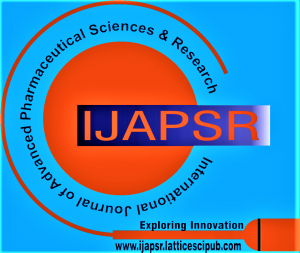![]()
Antiurolithiatic Activity of Desmodium Gangeticum L. and Heteropogon Contortus L
B. Madhulatha1, Akhlesh K Singhai2, Kotresh Yaligar3
1B. Madhulatha, Research Scholar, School of Pharmacy, LNCT University, Bhopal (M. P.), India.
2Dr. Akhlesh K Singhai, Director & Dean Academics, School of Pharmacy, LNCT University, Bhopal, (M. P.), India.
3Kotresh Yaligar, Research Scholar, School of Pharmacy, LNCT University, Bhopal (M. P.), India.
Manuscript received on 12 July 2023 | Revised Manuscript received on 08 October 2023 | Manuscript Accepted on 15 October 2023 | Manuscript published on 30 October 2023 | PP: 22-27 | Volume-3 Issue-6, October 2023 | Retrieval Number: 100.1/ijapsr.A4032124123 | DOI: 10.54105/ijapsr.A4032.03061023
Open Access | Editorial and Publishing Policies | Cite | Indexing and Abstracting
© The Authors. Published by Lattice Science Publication (LSP). This is an open-access article under the CC-BY-NC-ND license (http://creativecommons.org/licenses/by-nc-nd/4.0/)
Abstract: Over the past decade, there has been an increasing interest in investigating plant-based diuretic drugs. As the available medicinal efficacy is low and patients have to undergo painful surgeries in urolithiasis cases, they seek alternative medicine. This growing popularity necessitates a thorough investigation of plant extracts that can be used as antiurolithiatic agents. The main objective is to determine and confirm that the extracts of the selected weeds can be used as diuretic agents to treat urolithiasis conditions. The present study focuses on the extraction of weeds Desmodium gangeticum L. and Heteropogon contortus L. using a solvent and evaluates their in vivo antiurolithiatic potency. The plants Desmodium gangeticum L. and Heteropogon contortus L. were collected from around the Telangana region. Dr. K. Madhava Chetty, Department of Botany, Sri Venkateshwara University, Tirupati, Andhra Pradesh, India, authenticated the collected plants. Roots of Desmodium gangeticum L., and Heteropogon contortus L., were thoroughly washed under tap water, dried under shade, and powdered by using a mechanical grinder. The preparation of extracts was performed using Soxhlet extraction with methanol. The extracts were examined for their colour and consistency, and their percentage yield was calculated based on the quantity used for extraction. The preliminary phytochemical investigations were carried out using Desmodium gangeticum L. and Heteropogon contortus L. root extracts to determine the presence of carbohydrates, terpenes, tannins, flavonoids, steroids, phenols, and alkaloids. An acute oral toxicity study was conducted using male Wistar rats by the Organisation for Economic Co-operation and Development (OECD) Guideline 425. No toxicity was found up to a dose of 2000 mg/kg body weight. The higher dose of both plant root extracts showed good antiurolithiatic activity. Their potent in vitro and in vivo antiurolithiatic activity was dosedependent and comparable to that of the standard drugs Cystone and Neeri. Based on the pattern of excretion of water and electrolytes, it appears that active principles are present in these extracts having a frusemide-like activity. In another set of experiments, the state of hyperoxaluria induced by oral administration of 0.75% ethylene glycol in rats was significantly normalised by the oral administration of methanolic root extracts of Desmodium gangeticum L. and Heteropogon contortus L. The preliminary phytochemical investigation of methanolic root extracts of Desmodium gangeticum L., and Heteropogon contortus L., showed the presence of alkaloids, triterpenes, saponins, steroids, and flavonoids. Desmodium gangeticum L., and steroids, phenols, flavonoids, and triterpenes in methanolic root extracts of Heteropogon contortus L. Phenolics, flavonoids, alkaloids, and tannins act individually or in synergy via multiple mechanisms to produce the observed effect. However, the specific compound is not yet determined. The findings from the present study support the traditional use of Desmodium gangeticum L. and Heteropogon contortus L. (roots) for their antiurolithiatic activity.
Keywords: Desmodium Gangeticum L., Heteropogon contortus L., Antiurolithiatic, Extracts, etc.
Scope of the Article: Pharmacy Practice
